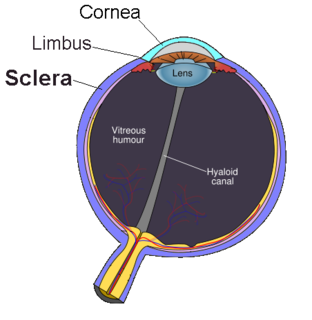Walleye is a freshwater fish native to most of Canada and the northern United States.

The walleye, also called the yellow pike, is a freshwater perciform fish native to most of Canada and to the Northern United States. It is a North American close relative of the European zander, also known as the pikeperch. The walleye is sometimes called the yellow walleye to distinguish it from the blue walleye, which is a subspecies that was once found in the southern Ontario and Quebec regions, but is now presumed extinct. However, recent genetic analysis of a preserved (frozen) 'blue walleye' sample suggests that the blue and yellow walleye were simply phenotypes within the same species and do not merit separate taxonomic classification.
Walleye may also refer to:
- Blue walleye, a subspecies of walleye that became extinct in the 1970s
- AGM-62 Walleye, a television-guided glide bomb used during the 1960s
- Wisconsin Walleye War, a 1987–1991 episode of civil unrest over the hunting and fishing rights of Chippewas outside of their reservation
- Toledo Walleye, a professional ice hockey team based in Toledo, Ohio
- Conditions relating to eyes
- Strabismus, in which the two eyes do not point in the same direction
- a variety of heterochromia, in which one eye has a white or blue-ish white iris
- eyeshine, as of the walleye fish
Strabismus is a condition in which the eyes do not properly align with each other when looking at an object. The eye which is focused on an object can alternate. The condition may be present occasionally or constantly. If present during a large part of childhood, it may result in amblyopia or loss of depth perception. If onset is during adulthood, it is more likely to result in double vision.

The tapetum lucidum is a layer of tissue in the eye of many vertebrates. Lying immediately behind the retina, it is a retroreflector. It reflects visible light back through the retina, increasing the light available to the photoreceptors. The tapetum lucidum contributes to the superior night vision of some animals. Many of these animals are nocturnal, especially carnivores, while others are deep sea animals.
- Wall eye, one name for a horse's blue eye

The blue walleye, also called the blue pike, was a unique color morph of walleye which was endemic to the Great Lakes of North America. Morphometric studies led biologists to classify the blue walleye as a separate species in 1926, although it was later downgraded to a subspecies. Listed as an endangered species by the United States in 1967, it was declared extinct in 1983.

The AGM-62 Walleye is a television-guided glide bomb which was produced by Martin Marietta and used by the United States Armed Forces during the 1960s. Most had a 250 lb (113 kg) high-explosive warhead; some had a nuclear warhead. The designation of the Walleye as an "air-to-ground missile" is a misnomer, as it is an unpowered bomb with guidance avionics, similar to the more modern GBU-15. The Walleye was superseded by the AGM-65 Maverick.
The Wisconsin Walleye War became the name for late 20th-century events in Wisconsin in protest of Ojibwe hunting and fishing rights. In a 1975 case, the tribes challenged state efforts to regulate their hunting and fishing off the reservations, based on their rights in the treaties of St. Peters (1837) and La Pointe (1842). On August 21, 1987, the U.S. District Court Judge Barbara Crabb ruled that six Ojibwe (Chippewa) tribal governments had the right under these treaties for hunting and fishing throughout their former territory.
| This disambiguation page lists articles associated with the title Walleye. If an internal link led you here, you may wish to change the link to point directly to the intended article. |













